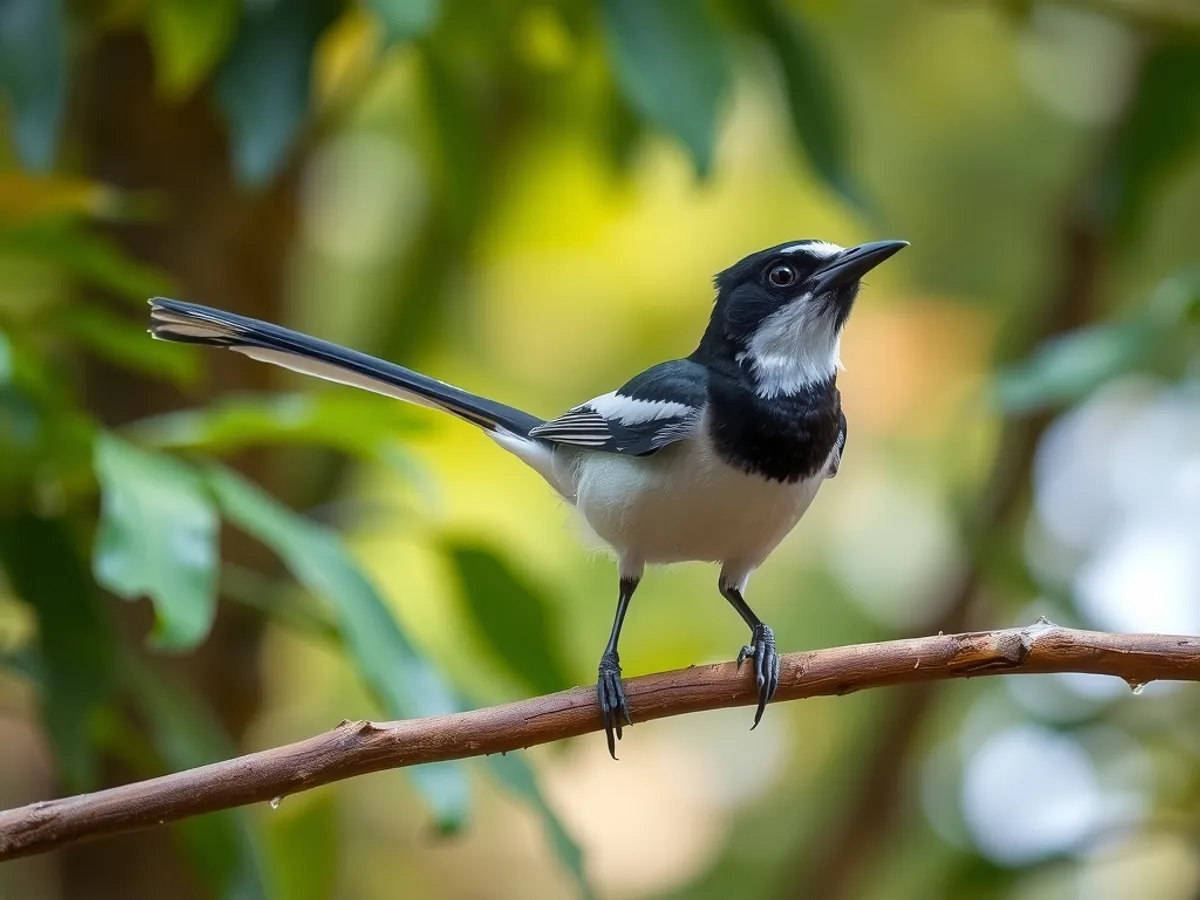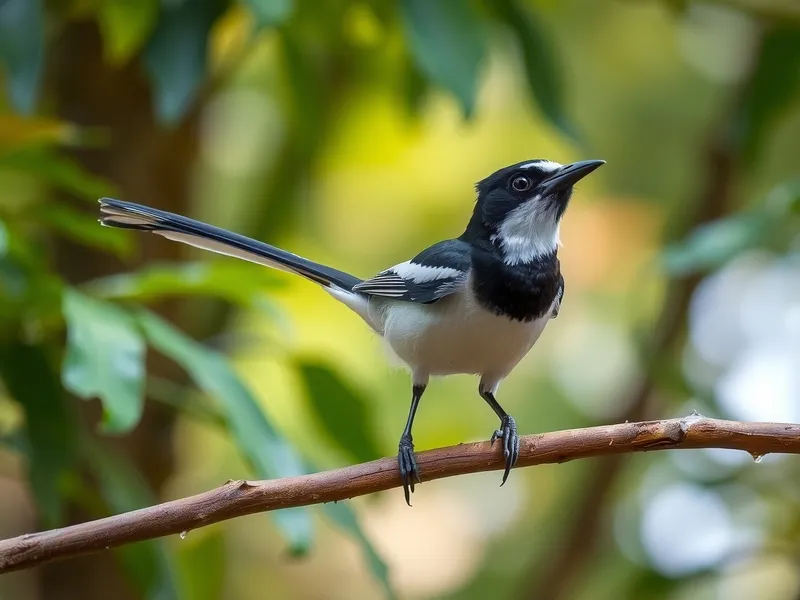
White-throated Magpie-jay
Calocitta formosa

Meet the White-throated Magpie-jay
The White-throated Magpie-jay is a striking and highly social bird native to Central America, recognized for its long tail, prominent crest, and vivid blue, white, and black plumage. This species is known for its noisy and inquisitive behavior, often moving in lively groups through open woodlands and forest edges. It exhibits remarkable intelligence and adaptability, frequently foraging in human-altered landscapes and even approaching people for food. The White-throated Magpie-jay's elaborate vocalizations and playful antics make it a favorite among birdwatchers and nature enthusiasts.
Classification
Bird
Habitat
Tropical dry forests, open woodlands, and forest edges
Diet
Omnivore
Lifespan
10-15 years
Conservation
Least Concern
Weight
205-213 grams
📖Fascinating Facts
Distinctive Crest
The White-throated Magpie-jay sports a tall, elegant crest of feathers on its head, which is especially pronounced in males.
Social Helpers
These birds often form extended family groups, with older offspring assisting parents in raising new chicks.
Vocal Variety
White-throated Magpie-jays have a wide repertoire of calls, some of which resemble the cries of hawks or mimic human-made sounds.
📋Detailed Description
The White-throated Magpie-jay (Calocitta formosa) is a large, conspicuous member of the family Corvidae, measuring 43–56 cm (17–22 in) in length, with the tail accounting for more than half of its total length. Adults display a striking plumage pattern: a bright blue mantle, wings, and tail, contrasted by a white face, throat, and underparts, with a distinctive black necklace across the chest and a prominent, elongated crest of blue-black feathers atop the head. Sexual dimorphism is subtle, with females typically exhibiting a narrower black chest band and slightly shorter crests. The species is highly vocal, producing a wide repertoire of calls, including harsh squawks, whistles, and melodious notes, which serve both social and territorial functions. White-throated Magpie-jays are extremely gregarious, forming stable social groups often composed of a dominant breeding pair and several helpers, which are usually offspring from previous years. Their intelligence is notable, with behaviors such as cooperative breeding, complex problem-solving, and opportunistic foraging. These birds are omnivorous, feeding on a varied diet of fruits, seeds, insects, small vertebrates, and even eggs or nestlings of other birds. They are agile and acrobatic, foraging both in trees and on the ground, and are known to exploit human-provided food sources. The species is adapted to a range of habitats, from tropical dry forests and thorn scrub to secondary growth and agricultural edges, and is especially abundant in disturbed or fragmented landscapes.
💡 Did you know?
Unlike many other jays, White-throated Magpie-jays are known to raid nests of other birds, feeding on eggs and nestlings as part of their omnivorous diet.
🔬Research & Sources
Wikipedia Summary
The white-throated magpie-jay is a large Central American species of magpie-jay. It ranges in Pacific-slope thorn forest from Jalisco, Mexico, to Guanacaste, Costa Rica. Magpie-jays are noisy, gregarious birds, often traveling in easy-to-find flocks, mobbing their observers.
Last Modified: 1/14/2025
🎭Behavior & Social Structure
White-throated Magpie-jays are diurnal and spend most of their day foraging, socializing, and maintaining group cohesion. They forage in loose flocks, often using sentinel behavior—one or more individuals keep watch while others feed. Their diet is highly opportunistic, shifting seasonally according to food availability; during the dry season, they rely more on arthropods and small vertebrates, while in the wet season, they consume more fruits and seeds. Social interactions are complex, involving allopreening, play, and vocal communication. They frequently engage in mobbing behavior to drive off predators or intruders, and their alarm calls can alert other species to danger. Roosting occurs communally in dense foliage, and group members maintain close bonds through frequent contact calls and grooming.
👶Reproduction & Life Cycle
Breeding occurs primarily from February to June, coinciding with the onset of the rainy season. The species practices cooperative breeding: a dominant female lays 3–6 pale blue or greenish eggs in a large, bulky nest constructed high in a tree, often in a thorny or otherwise inaccessible location. Incubation lasts 21–24 days and is performed mainly by the breeding female, while the male and helpers provision her with food. After hatching, chicks are altricial and remain in the nest for 21–24 days. Both parents and helpers feed the nestlings and defend the nest aggressively against predators. Juveniles may remain with the natal group for several years, assisting in subsequent breeding attempts.
🛡️Adaptations & Survival
The White-throated Magpie-jay exhibits several adaptations for survival in variable environments. Its strong, decurved bill is suited for both probing and tearing, allowing it to exploit a wide range of food sources. The elongated tail and broad wings provide maneuverability in dense vegetation. Sociality and cooperative breeding enhance reproductive success in unpredictable habitats, while high intelligence and behavioral flexibility enable exploitation of novel resources, including anthropogenic food. Their loud, varied vocalizations facilitate communication in visually obstructed habitats and play a role in territory defense and group cohesion.
🎨Cultural Significance
In Central American folklore, magpie-jays are often regarded as symbols of cleverness and resourcefulness, reflecting their intelligence and adaptability. Their striking appearance and bold behavior make them popular subjects in local art and ecotourism. In some regions, their feathers have been used in traditional adornments, though this is not widespread. The species is a favorite among birdwatchers and is sometimes featured in regional conservation campaigns as a charismatic representative of dry forest avifauna.
🔬Recent Research & Discoveries
Recent research has focused on the species' cooperative breeding system, revealing complex kin-based social structures and division of labor among group members. Studies on vocal communication have documented a rich and context-dependent call repertoire, with evidence for individual recognition and alarm call specificity. Ongoing genetic analyses are clarifying relationships within the genus Calocitta and its divergence from Cyanocorax. Ecological studies are examining the species' role in seed dispersal and its adaptability to fragmented landscapes. Behavioral experiments have demonstrated advanced problem-solving abilities, supporting the corvid reputation for intelligence.
🎥Wildlife Videos

White-Throated Magpie-Jay: Facts You Won't Believe!
This is one bird you won't have to look too hard to find! The white-throated magpie jay ranges from the Pacific coast of Mexico to ...
Kidadl

Fascinating Facts about Magpies!
Magpies are known for their intelligence, and sometimes hated for it as well. In this video you will find 8 of the most interesting ...
A Shot Of Wildlife

Black Throated Magpie Jay
Nashville Zoo Animal Friends

White-throated Magpie-Jays, Birds of Costa Rica
At the start of our hike to the volcano, we saw these beautiful guys! Like wow, what a great start of the day! The beautiful ...
Bird Jamboree

White throated Magpie Jay in 4K | Lumix FZ1000
These and many more shots in 4K are online at http://www.travelshots.nl.
Filmsby Travelshots

White-throated magpie-jay in Costa Rica
The white-throated magpie-jay (Calocitta formosa) is a large Central American species of magpie-jay. It ranges in Pacific-slope ...
Marek Jackowski Photography
🌍Habitat Information
The White-throated Magpie-jay typically inhabits Tropical dry forests, open woodlands, and forest edges environments. White-throated Magpie-jays have adapted to their environments with specialized features and behaviors.
Primary Habitat:
Tropical dry forests, open woodlands, and forest edges
More detailed habitat information will be available soon.
🛡️Conservation Status
The White-throated Magpie-jay is currently classified as Least Concern. Conservation efforts are crucial for preserving this species for future generations.
Common Threats:
- 🏠Habitat loss and fragmentation
- 🌡️Climate change impacts
- 🎯Hunting and poaching
- 🏭Human-wildlife conflict
⚠️Threats & Conservation Challenges
Currently classified as Least Concern by the IUCN, the White-throated Magpie-jay maintains stable populations across its range. However, localized threats include habitat loss due to agricultural expansion, urbanization, and deforestation. The species is relatively tolerant of habitat disturbance and often thrives in human-modified landscapes, but fragmentation can disrupt social structure and reduce breeding success. Occasional persecution occurs when birds raid crops or poultry. Long-term climate change and continued habitat alteration could pose future risks, particularly in areas with intensive land use.
🔬Scientific Classification
Scientific Name
Calocitta formosa
Classification Hierarchy
🔍 About Taxonomic Classification
Taxonomic classification is a hierarchical system used by scientists to classify and organize living organisms based on shared characteristics and evolutionary relationships.
The system moves from broad categories (Kingdom) to increasingly specific ones, with each animal's scientific name typically consisting of its Genus and species.
📝Community Notes
Share your observations and insights about the White-throated Magpie-jay with our community of wildlife enthusiasts.
Join Our Community
Sign in to share your observations and connect with fellow wildlife enthusiasts.
Sign In to ContributeNo community notes yet
Be the first to share your observations about the White-throated Magpie-jay!
Explore White-throated Magpie-jay
Select a tab above to learn more about this amazing animal.
📸Photo Gallery
No photos available for this animal yet.
🌟Discover More Wildlife
Continue your journey of discovery with more fascinating animals from our database
